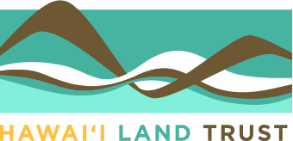Discovering Kīpuka in Suburban O’ahu
Waikalua Loko I’a is named for the “water of the lua fighter or of the pit”. In 1795, Kamehameha I divided the conquered Oʻahu lands among his warrior chiefs and counselors, and retained the ahupuaʻa of Kāneʻohe as his own personal property (ʻĪʻī 1959). Much of Kāneʻohe continued to remain as the personal property of Kamehameha II and Kamehameha III.
Waikalua Loko Iʻa is one of the few remaining intact ancient fishponds in Hawaiʻi. Located in Kāneohe Bay, this approximately 400-year-old fishpond exemplifies the ingenuity of our kūpuna who skillfully designed and managed this extensive irrigation and aqua-cultural system by creating a fish pond and ahupuaʻa that once flourished with kalo, limu, iʻa, manu, pāpaʻi, and lāʻau. This place emulates our rich cultural and natural heritage, and provides us (the community) an educational opportunity to culturally reconnect with our kūpuna through the ‘āina; and with the ʻāina through our kūpuna.
Waikalua Loko Iʻa is considered an historical resource and is currently owned by the Pacific American Foundation, who has partnered with HILT to preserve and restore this fishpond into a community-driven sustainable food source, as previously demonstrated by our kūpuna. Waikalua Loko I’a is flanked by Kāneʻohe and Kawa Streams and is home to the endangered Aeʻo.
HILT Intern Kalena Thatcher visited Waikalua Loko Iʻa with HILT CEO Laura Kaakua, PAF Executive Director, Herb Lee, musician Henry Kapono and his wife Leslie to film a “word of the day” segment for Henry Kapono’s website.
My first time visiting Waikalua was incredible! It was a perfect day, filled with sunshine, a little bit of clouds, wind blowing against my face, fish frolicking in the pond, the ocean rushing through the mākāhā, while limu and crabs covered the shore. Music by Henry Kapono, laughter, and lots of aloha completed this magical day. As I pulled gorilla ogo and mangrove seeds from the shore I felt like I was home. Although I was raised in Kahaluʻu, I had never been here before. My naʻau felt connected not only with the ʻāina, but also with the many ancestors and aliʻi that were here before. I saw images in my mind of this bountiful ahupuaʻa that was once well maintained and enjoyed by my ancestors. However, as I engaged in this experience I was sorely reminded of constant development as tree trimmers cut away on the mountain ridge to make way for electrical lines, million dollar homes across the stream, McDonalds and a golf course around the corner, and a waste-water treatment facility as our nearest neighbor. I returned to the wonderful smell of the lepo with each step that I took, grateful for the cooling trade winds. This beautiful habitat continuously displayed signs of its sustainable capacity and function before me.
Ka hunahuna lepo ma lalo o kou wāwae, the speck of dirt below your feet, acknowledges the reciprocal relationship between kanaka, aliʻi, and ʻāina. Kanaka means more than just man, or person; from a Hawaiian perspective it means to be a servant to the land and to maintain a loving relationship (kuleana) of service (mālama) and duty to protect and always respect it . Knowing that our Aliʻi Nui and his descendants once were the caretakers of this Waikalua ʻāina, we should equate ourselves with the lepo, and humble ourselves to be of service to malama it; for we represent the ground that our ancestors once stood upon for strength and nourishment. The ancestors who stewarded this place were responsible for feeding our aliʻi; therefore our aliʻi were responsible for caring and protecting them. This is an example of respectful reciprocity of care and duty with aloha, no expectations.
Chapter 343 (1) of the Hawaiʻi Revised Statutes considered the significance of the area as “already undergone substantial modification due to the Kāneʻohe Wastewater Preliminary Treatment Facility and the Golf Course, so development would not necessarily be destroying any known natural or cultural resources. After just one day of working and engaging at the fishpond, I found this conclusion to be painfully wrong. The state notes there is “insignificant impact” caused by development in the area, this subjective prerogative is what has led to the continued degradation of our ʻāina. This place has had a significant impact on me. It is easy to pass judgement and categorize land as a parcel on a map or piece of paper, but until you come and introduce yourself to the place, engage in all that it has to offer, embrace all that it has possessed for hundreds of years as a sustainable natural resource, then leave wanting to return because you have now experienced the essence and have a connection with the place. I assure you that Waikalua Loko Iʻa will inspire your naʻau and reconnect you to your heritage. It was truly an honor for me to contribute in my small way to this beautiful place and I will continue to kōkua. I invite you to learn, connect, heal, and help to preserve this natural habitat that was once cared for by our Aliʻi Nui!
— Kalena Thatcher, HILT Intern 2020


